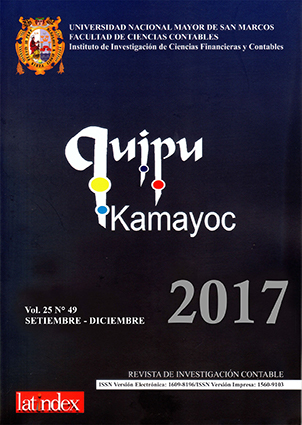Lack of direction and leadership and growth of anomie in the sector public in Peru
DOI:
https://doi.org/10.15381/quipu.v25i49.14287Keywords:
Direction, leadership, anomie, corruptionAbstract
The State as any organization needs to take direction and management models that ensure the aims and objectives of the good use of public budgets that is assigned. Two phenomena that have precluded this management is evident in the respect in recent years. On the one hand, the absence of officials with ability to add direction and management in State entities in the Peru, and on the other, hand operated “punitive” public server characterized by “anomie” that based on their actions, which many times is instilled within the State, practices and trigger nothing efficient, effective and transparent, but acquired in its socio-cultural formation as it is the “moral anomie” characterized by the so-called “middle tolerance”. Specifically through the present paper analyzes and describes the characteristics and trends of the actions of the State worker before these two phenomena quasi structural. In addition to the consequences which this situation in its relations with the rest of the economy, characterized by high levels of corruption and the inadequate provision of public services for which have been created, ensuring the effectiveness of the spending on regulatory legislation required to effect.Downloads
Downloads
Published
Issue
Section
License
Copyright (c) 2018 Alberto Benjamín Espinoza Valenzuela

This work is licensed under a Creative Commons Attribution-NonCommercial-ShareAlike 4.0 International License.
AUTHORS RETAIN THEIR RIGHTS:
a. Authors retain their trade mark rights and patent, and also on any process or procedure described in the article.
b. Authors retain their right to share, copy, distribute, perform and publicly communicate their article (eg, to place their article in an institutional repository or publish it in a book), with an acknowledgment of its initial publication in Quipukamayoc .
c. Authors retain theirs right to make a subsequent publication of their work, to use the article or any part thereof (eg a compilation of his papers, lecture notes, thesis, or a book), always indicating the source of publication (the originator of the work, journal, volume, number and date).






